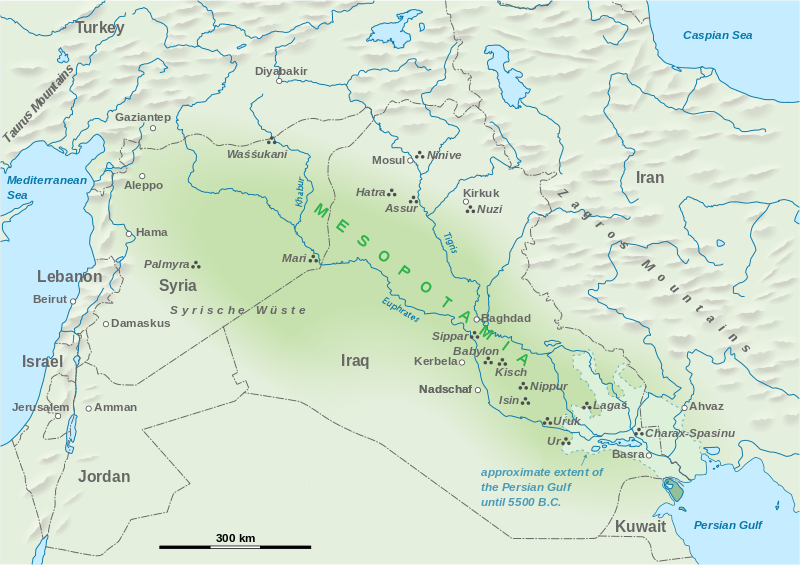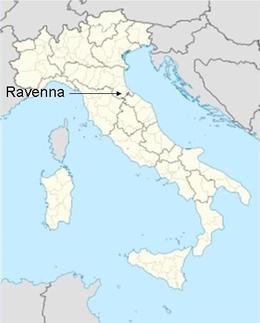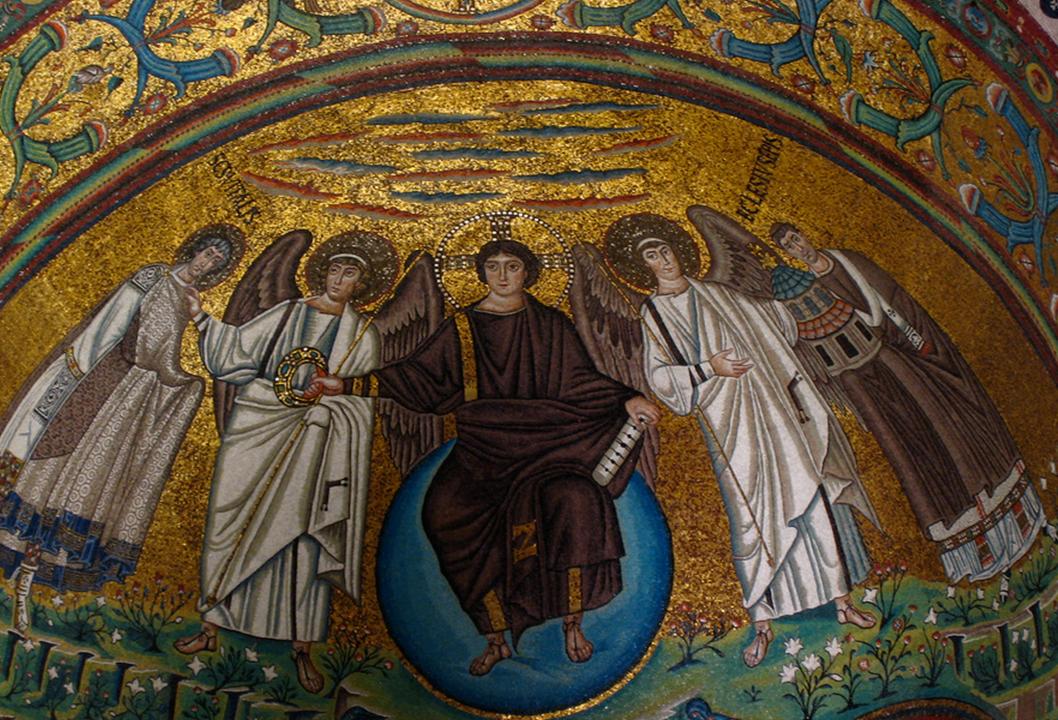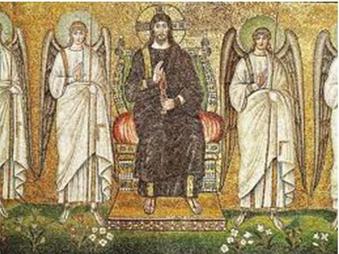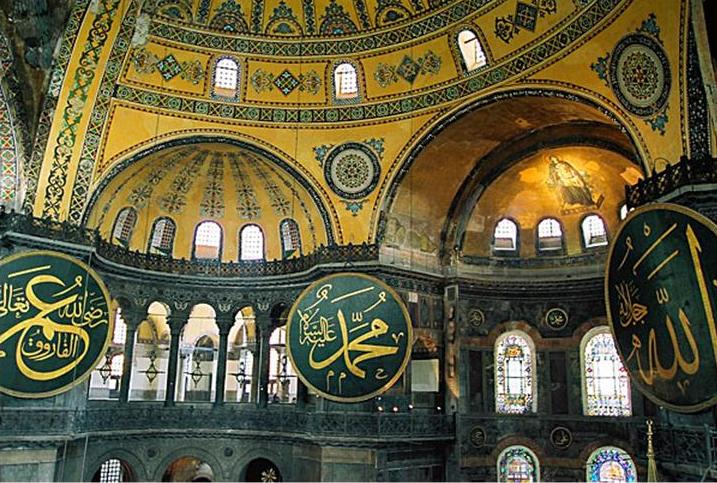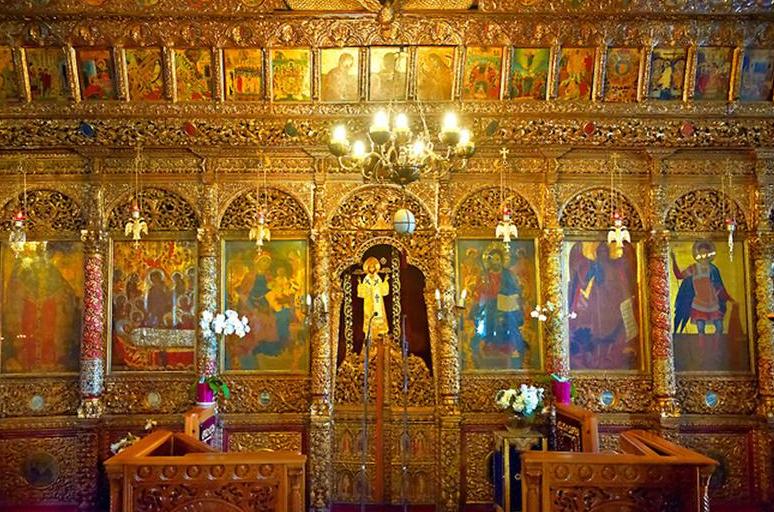Mosaics From Around the World
|
|
The ancient art of mosaic has been used for thousands of years to decorate places of worship, from Roman temples to Byzantine cathedrals and Persian mosques.
The earliest known examples of mosaics made of different materials were found at a temple building in Abra, Mesopotamia, and are dated to the second half of 3rd millennium BC. They consist of pieces of coloured stones, shells and ivory. Excavations at Susa and Chogha Zanbil show evidence of the first glazed tiles, dating from around 1500 BC. However, mosaic patterns were not used until the times of Sassanid Empire and Roman influence. |
Greek and Roman mosaic
Bronze age pebble mosaics have been found at Tiryns and mosaics of the 4th century BC are found in the Macedonian palace-city of Aegae. The 4th-century BC mosaic of The Beauty of Durrës discovered in Durrës, Albania in 1916, is an early figural example; the Greek figural style was mostly formed in the 3rd century BC. Mythological subjects, or scenes of hunting or other pursuits of the wealthy, were popular as the centre pieces of a larger geometric design, with strongly emphasized borders.
Greek figural mosaics could have been copied or adapted paintings, a far more prestigious art form, and the style was enthusiastically adopted by the Romans so that large floor mosaics enriched the floors of Hellenistic villas and Roman dwellings from Britain to Dura-Europos. Most recorded names of Roman mosaic workers are Greek, suggesting they dominated high quality work across the empire. Splendid mosaic floors are found in Roman villas across North Africa, in places such as Carthage, and can still be seen in the extensive collection in Bardo museum in Tunis, Tunisa.
In Rome, Nero and his architects used mosaics to cover some surfaces of walls and ceilings in the Domus Aurea, built 64 AD, (the Domus Aurea (Latin, "Golden House") was a large landscaped portico villa built by the Emperor Nero in the heart of ancient Rome, after the great fire in A.D. 64), and wall mosaics are also found at Pompeii and neighbouring sites. However it seems that it was not until the Christian era that figural wall mosaics became a major form of artistic expression. The Roman church of Santa Costanza, which served as a mausoleum for one or more of the Imperial family, has both religious mosaic and decorative secular ceiling mosaics on a round vault, which probably represent the style of contemporary palace decoration.
Bronze age pebble mosaics have been found at Tiryns and mosaics of the 4th century BC are found in the Macedonian palace-city of Aegae. The 4th-century BC mosaic of The Beauty of Durrës discovered in Durrës, Albania in 1916, is an early figural example; the Greek figural style was mostly formed in the 3rd century BC. Mythological subjects, or scenes of hunting or other pursuits of the wealthy, were popular as the centre pieces of a larger geometric design, with strongly emphasized borders.
Greek figural mosaics could have been copied or adapted paintings, a far more prestigious art form, and the style was enthusiastically adopted by the Romans so that large floor mosaics enriched the floors of Hellenistic villas and Roman dwellings from Britain to Dura-Europos. Most recorded names of Roman mosaic workers are Greek, suggesting they dominated high quality work across the empire. Splendid mosaic floors are found in Roman villas across North Africa, in places such as Carthage, and can still be seen in the extensive collection in Bardo museum in Tunis, Tunisa.
In Rome, Nero and his architects used mosaics to cover some surfaces of walls and ceilings in the Domus Aurea, built 64 AD, (the Domus Aurea (Latin, "Golden House") was a large landscaped portico villa built by the Emperor Nero in the heart of ancient Rome, after the great fire in A.D. 64), and wall mosaics are also found at Pompeii and neighbouring sites. However it seems that it was not until the Christian era that figural wall mosaics became a major form of artistic expression. The Roman church of Santa Costanza, which served as a mausoleum for one or more of the Imperial family, has both religious mosaic and decorative secular ceiling mosaics on a round vault, which probably represent the style of contemporary palace decoration.
|
In the 5th Century, Ravenna, the capital of the Western Roman Empire, became the center of late Roman mosaic art. Ravenna continues to be an important city for mosaic art hosting the Ravenna Festival celebrating all things mosaic; http://www.ravennamosaico.it/eng/
In 539 Ravenna was reconquered by the Romans in the form of the Eastern Roman Empire (Byzantine Empire). The greatest development of Christian mosaics unfolded in the second half of the 6th century. Outstanding examples of Byzantine mosaic art are the later phase mosaics in the Basilica of San Vitale and Basilica of Sant'Apollinare Nuovo. |
|
Byzantine mosaics
Mosaic art took center stage in Byzantine culture, mosaics were more central to Byzantine culture than to that of Western Europe. Byzantine church interiors were generally covered with golden mosaics. Mosaic art flourished in the Byzantine Empire from the 6th to the 13th centuries. The majority of Byzantine mosaics were destroyed without trace during wars and conquests, but the surviving remains still form a fine collection. The great buildings of Emperor Justinian like the Hagia Sophia in Constantinople, the Nea Church in Jerusalem and the rebuilt Church of the Nativity in Bethlehem were certainly embellished with mosaics but none of these survived. The fall of Constantinople in 1204 caused the decline of mosaic art. In parts of Italy, which were under eastern artistic influences, like Sicily and Venice, mosaic making never went out of fashion in the Middle Ages but most empires of this time were no longer able to afford the luxury of mosaics. It wasn't until the 15th Century that there was a renaissance of mosaic art leading to today' modern interpretations of this ancient art form. |
Resources
›
Mosaics Around the World

